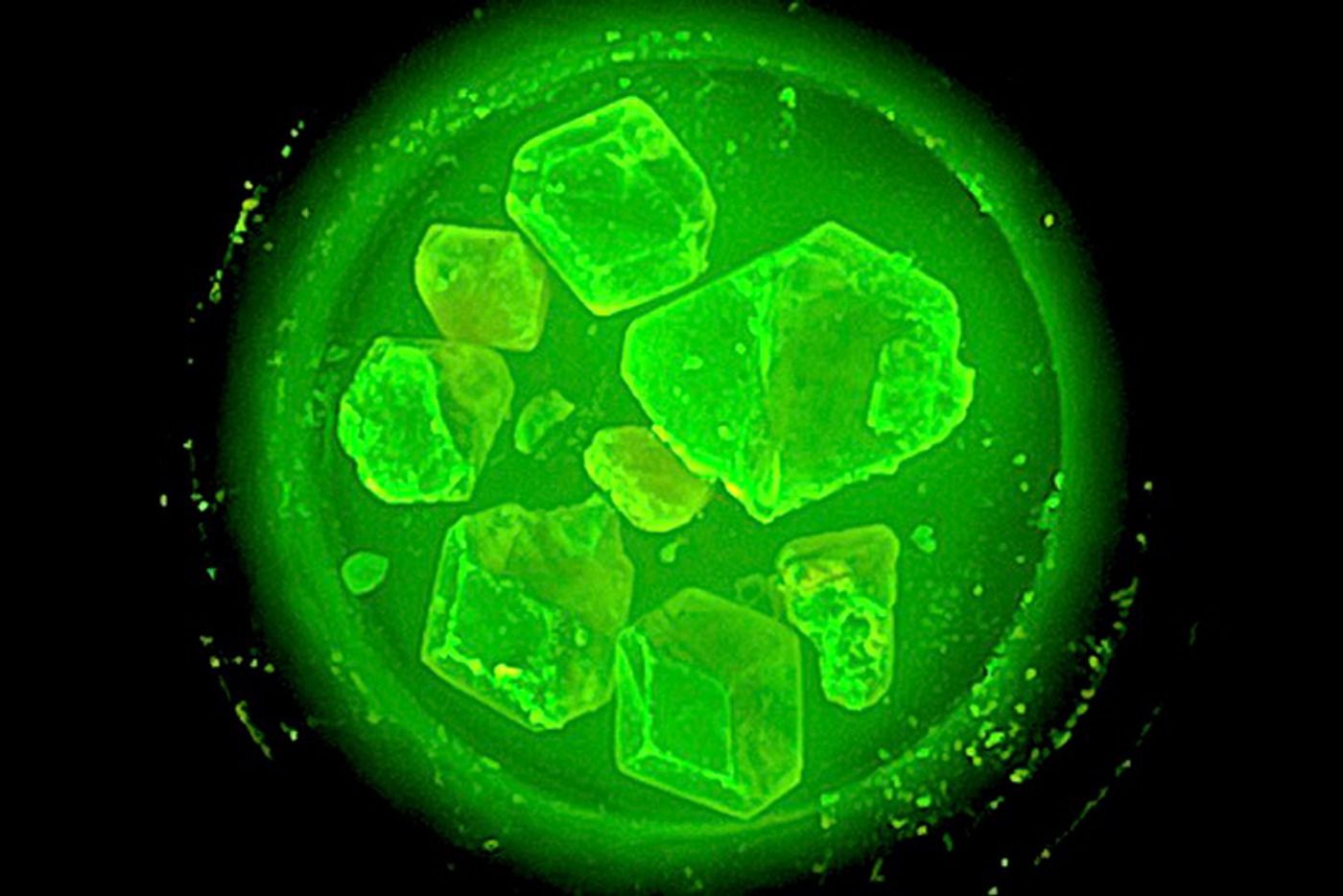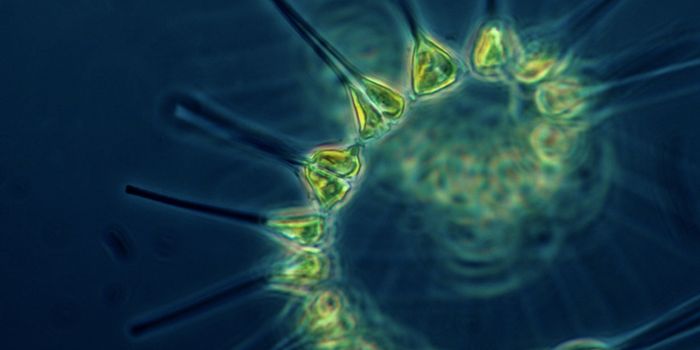Organic-Inorganic Materials Used to Improve Imaging Technologies
A recent study published in Advanced Materials explores the next generation of organic-inorganic materials capable of improving the quality of images produced by CT scans, X-ray machines, and other imaging and radiation detection technologies. This study holds the potential to develop better scintillators, which are capable of converting high energy radiation into near-visible or visible light, and this research started with a 2018 study from the same team of researchers.
image of a zero-dimensional organic metal halide hybrid scintillator glowing under radiation exposure. (Credit: Dr. Biwu Ma)
“Reducing the radioluminescence decay lifetime of scintillators to nanoseconds is an important breakthrough,” said Dr. Biwu Ma, who is a professor in the Department of Chemistry and Biochemistry at Florida State University (FSU), and a co-author on the study. “Using a hybrid material made up of both organic and inorganic components means each component can be used for the part of the process where it is most effective.”
Study co-author, Dr. Biwu Ma, who is a professor in the Department of Chemistry and Biochemistry at Florida State University. (Credit: Florida State University)
Commercial applications for scintillators range from health care to security and could greatly benefit from developing more efficient scintillators capable of improved image quality.
Current scintillators use inorganic materials consisting of rare Earth elements and are both rigid and their manufacturing process is very energy- and temperature-demanding. These next generation scintillators developed in this recent study are known as zero-dimensional organic-inorganic hybrids called metal halide clusters, which consist of a combination of negatively charged inorganic parts and positively charged organic molecules.
Along with the energy and temperature needs, there is a stark contrast between inorganic and organic scintillators. While inorganic scintillators can use hundreds of different types of crystals for their use, they are also expensive and have lower radioactive decay times, whereas organic scintillators are cheap to develop, and their radioactive decay times are faster. Radioactive decay times are important since this determines how fast the emitted light returns to its highest measured value.
The researchers first tested these materials in a 2020 study where they discovered the metal halides were capable of both absorbing high energy radiation while emitting visible light. For this most recent study, the researchers found the metal halide parts and organic molecules make a good collaboration with each other. For instance, while metal halides absorb high energy radiation, the organic parts emit visible light. On top of that, the researchers found the time of the light being emitted from the organic molecules were at nanosecond scales, compared to how fast the metal halides could emit light on their own, which was microseconds to milliseconds.
“This is a continuation of our push for better materials over the years, from 2018, when we first discovered this class of materials, to 2020, when we used them for scintillation for the first time,” Ma said. “This is another major breakthrough.”
Going forward, the team has already filed patent applications for the organic metal halide hybrid scintillators, along with getting funding for further technological development and partnering with private companies from the GAP Commercialization Investment Group, which is part of the FSU Office of Commercialization.
What new discoveries will scientists make about scintillators in the coming years and decades, and how will they help improve imaging technologies? Only time will tell, and this is why we science!
Sources: Advanced Materials, Stanford University, Florida State University News, CERN, Berkeley Nucleonics Group, ACS Materials Letters
As always, keep doing science & keep looking up!










